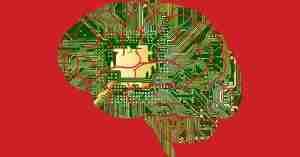Introduction
There are many misconceptions about adult learning. There is also one important truth of which we need to be aware. This truth seems to be the source of many limiting beliefs which simply aren’t true, so let’s examine that first.
In our thirties, our brains begin to shrink a little. This process continues into our sixties, at which time it seems to accelerate. The areas most affected are the frontal lobe and hippocampus. As well, cortical density and white matter thin out.
While the natural aging process is responsible for these changes, the cognitive effects aren’t apparent. Nor are they set in stone. Clearly, some people fall victim to aging brains while others maintain their mental sharpness all their lives.
Why?
That’s what leads us to our misconceptions.
Misconception #1
As we get older, our memories become worse.
The Truth
In healthy individuals, this is only true if we let it be true. Let’s put it this way: if we never pick up a weight and do a bicep curl, will our biceps be as big as if we worked them out frequently?
Of course not.
If we haven’t bothered to learn much since high school, then chances are we haven’t had to remember much new information since then, either. Without working out our brains, they won’t make new connections. Old neural connections will prune themselves. Fortunately, the process can be stopped and reversed.
It might be difficult to remember new information at first, but new neural connections can be made very quickly, and our brains will start remembering things again. With some assistance, it is even possible to be a more effective learner than before.
Misconception #2
Our brains have a fixed number of neural connections and then die off over time.
The Truth
Babies are born with about the same number of connections as an adult. Early in life, there is an explosion of activity, and then those connections get pruned back after about three years old. This explosion happens again in other regions of the brain. Once again, they are pruned.
Those connections can die over time if we don’t use them. If we continue to think and learn as adults, we’ll likely stay as sharp as we were in our twenties.
The best news, however, is that we can regrow these connections when we start learning again. Learning is the key to neural plasticity. We make new connections constantly, which continues into our old age as long as we use our brains.
While the brain is an organ, not a muscle, it works similarly. If we mentally work out, our brains because stronger and more capable. If we do nothing, it weakens, just like muscles.
Misconception #3
Unlike young learners, adult learners need prior knowledge of something to learn it.
The Truth
In the classroom, one of the first things teachers do when introducing a new topic is activate prior knowledge. Our brains are association machines, so learning something new requires association.
Using prior knowledge helps us to relate and file something new. The information we use as prior knowledge doesn’t have to be especially relevant. For example, when I started learning about computer programming, I found it was similar to the building instructions that came with furniture. And while there are some critical differences between the two, it helped me frame my learning.
Conclusion
In short, anyone can learn as an adult. You have what it takes. It might be a little slow-going at first. It was for me. I was tempted to give up. But then, things started to make sense — the pieces began to fit together. And if you can wait for that first ah-ha moment, I promise you there are many more to follow.
Join Conrad Andrews on Facebook to get updates on the latest techniques in learning.







